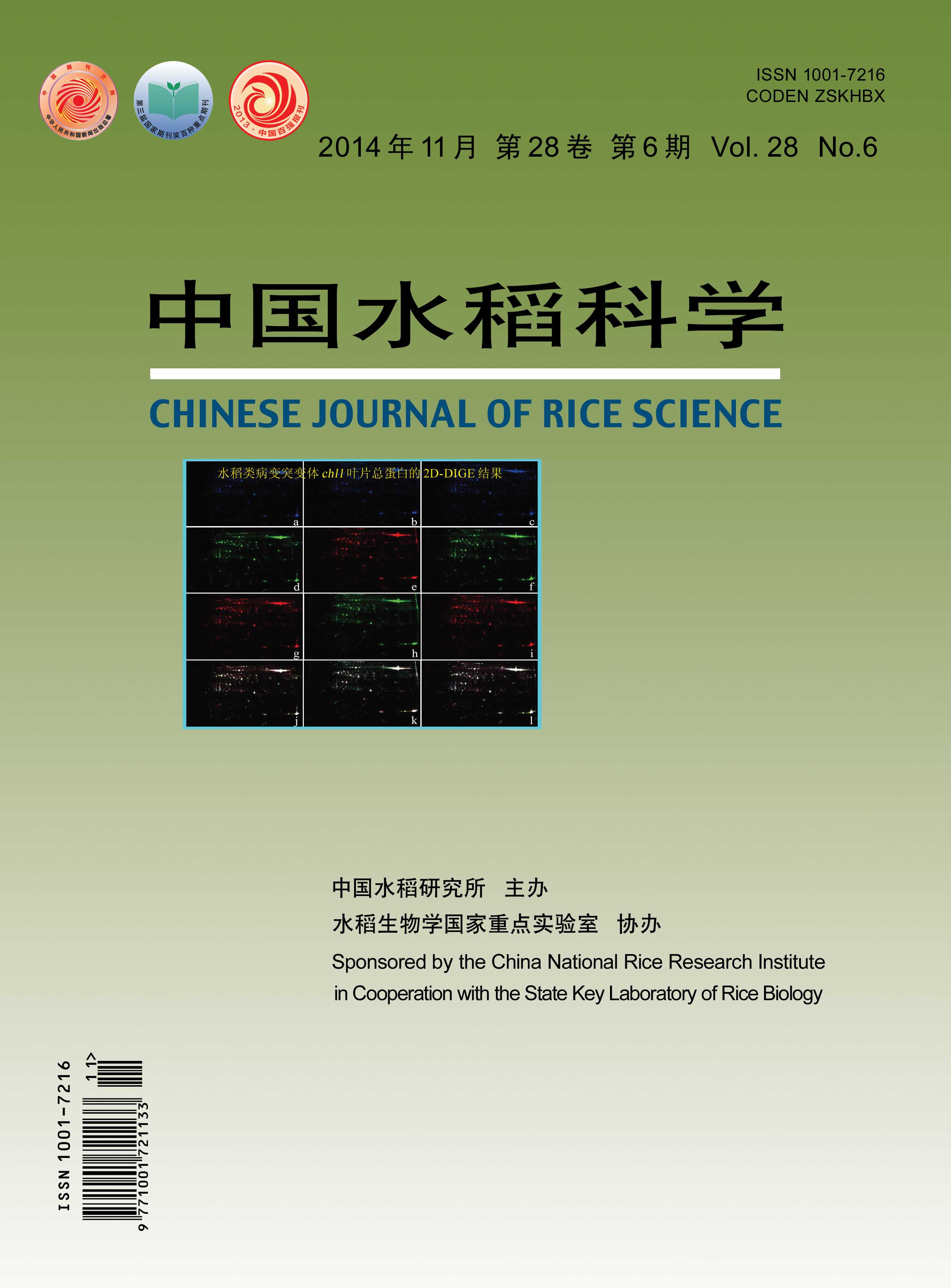|
|
Difference in Yield and Its Components Characteristics of Different Type Rice Cultivars in the Lower Reaches of the Yangtze River
JIANG Yuanhua, ZHANG Hongcheng*, ZHAO Ke, XU Junwei, WEI Huanhe, LONG Houyuan, WANG Wenting, DAI Qigeng, HUO Zhongyang, XU Ke, WEI Haiyan, GUO Baowei
2014, 28(6):
621-631.
DOI: 10.3969/j.issn.1001-7216.2014.06.008
With 20 representative rice cultivars belonging to four types as materials, a field experiment was conducted to reveal the difference in yield and its components in the ricewheat cropping areas(Yangzhou, Changshu) in the lower reaches of the Yangtze River in 2012-2013. Grain yield and its components, stems and tillers and panicle traits and grainfilling were analyzed systematically.Result show that, 1)under the high yielding cultivation conditions, rice grain yield followed a decline trend of indicajaponica hybrid rice(IJHR) >japonica hybrid rice(JHR)>traditional japonica rice(TJR)>indica hybrid rice(IHR) in different sites and years.The average yield of IJHR in both years in Yangzhou was 12499.4 kg·hm-2, 4.82%,11.94% and 19.68% higher than those of JHR,TJR and IHR.2)The contribution of yield components to yield was total spikelet number>seedsetting rate>1000grain weight,and the contribution to total spikelet number was grain number per panicle>number of effective panicles.It illustrated that big panicle remained the main way for high yield of rice.3)The number of stems and tillers at jointing stage was TJR>IHR>JHR>IJHR,the contribution rates of stems and primary tillers were IJHR>IHR>TJR>JHR, while the contribution rate of the secondary tillers was JHR>TJR>IHR>IJHR, the composition of stems and tillers at waxy stage was the same as that at jointing stage;percentage of effective tillers of TJR(7576%) ranked first,followed by JHR(7287%),IJHR(6680%) and IHR(63.24%).4)Panicle length followed a trend of IHR>IJHR>JHR>TJR;grain density,single panicle weight were IJHR>JHR>IHR>TJR;grain number on the primary rachis branch was JHR>IJHR>TJR>IHR,while number of branches and total grain number on the primary rachis branch were IJHR>JHR>TJR>IHR,the trend of the contribution rate of grain number on the primary rachis branch to grain number per panicle from high to low was TJR(41.00%),JHR(35.50%),IJHR(31.83%),IHR(27.92%);grain number on the secondary rachis branch was IHR>IJHR>TJR>JHR,while number of branches and total grain number on the secondary rachis branch were IJHR>JHR>IHR>TJR,the trend of the contribution rate of grain number on the secondary rachis branch to grain number per panicle from high to low was IHR(72.80%),IJHR(68.17%),JHR(64.50%),TJR(59.00%). 5)The final grain weight was TJR>JHR>IHR>IJHR,maximum grainfilling rate was IHR>TJR>JHR>IJHR,the time reaching the maximum grainfilling rate was JHR>TJR>IJHR>IHR,mean grainfilling rate was IHR>TJR>JHR>IJHR,effective grainfilling time was JHR>IJHR>TJR>IHR;For grainfilling characteristics during different stages,grainfilling amount of gradual growth stage, fast growth stage and slow growth stage were TJR>JHR>IHR>IJHR;grainfilling time of gradual growth stage was JHR>TJR>IJHR>IHR,grainfilling time of fast growth stage and slow growth stage were JHR>IJHR>TJR>IHR; mean grainfilling rate of gradual growth stage was IHR>TJR>IJHR>JHR,grainfilling rate of fast growth stage and slow growth stage were IHR>TJR>JHR>IJHR.Compared with JHR ,TJR and IHR, IJHR had obvious advantages in productivity with big panicle as the basis.
|

